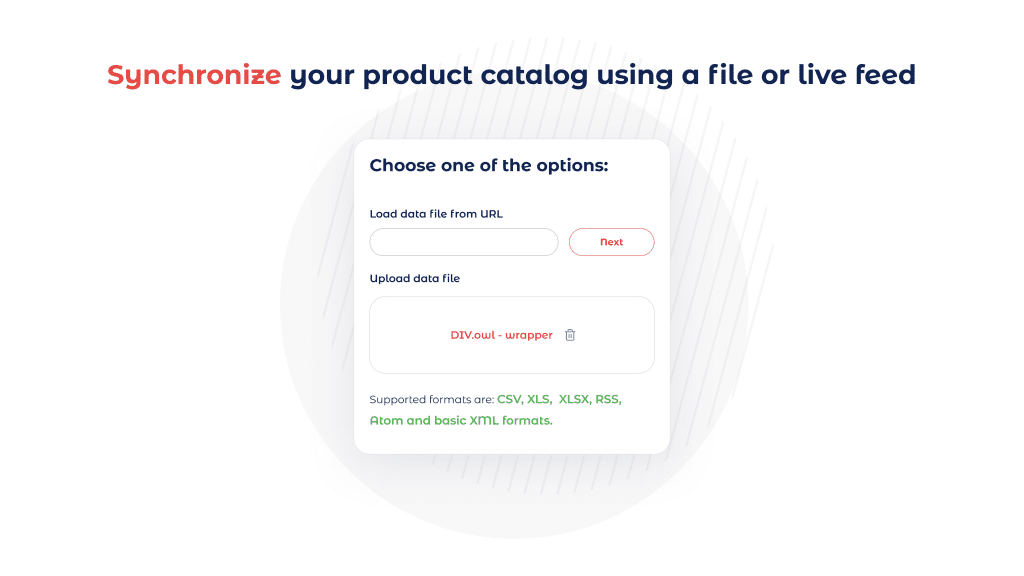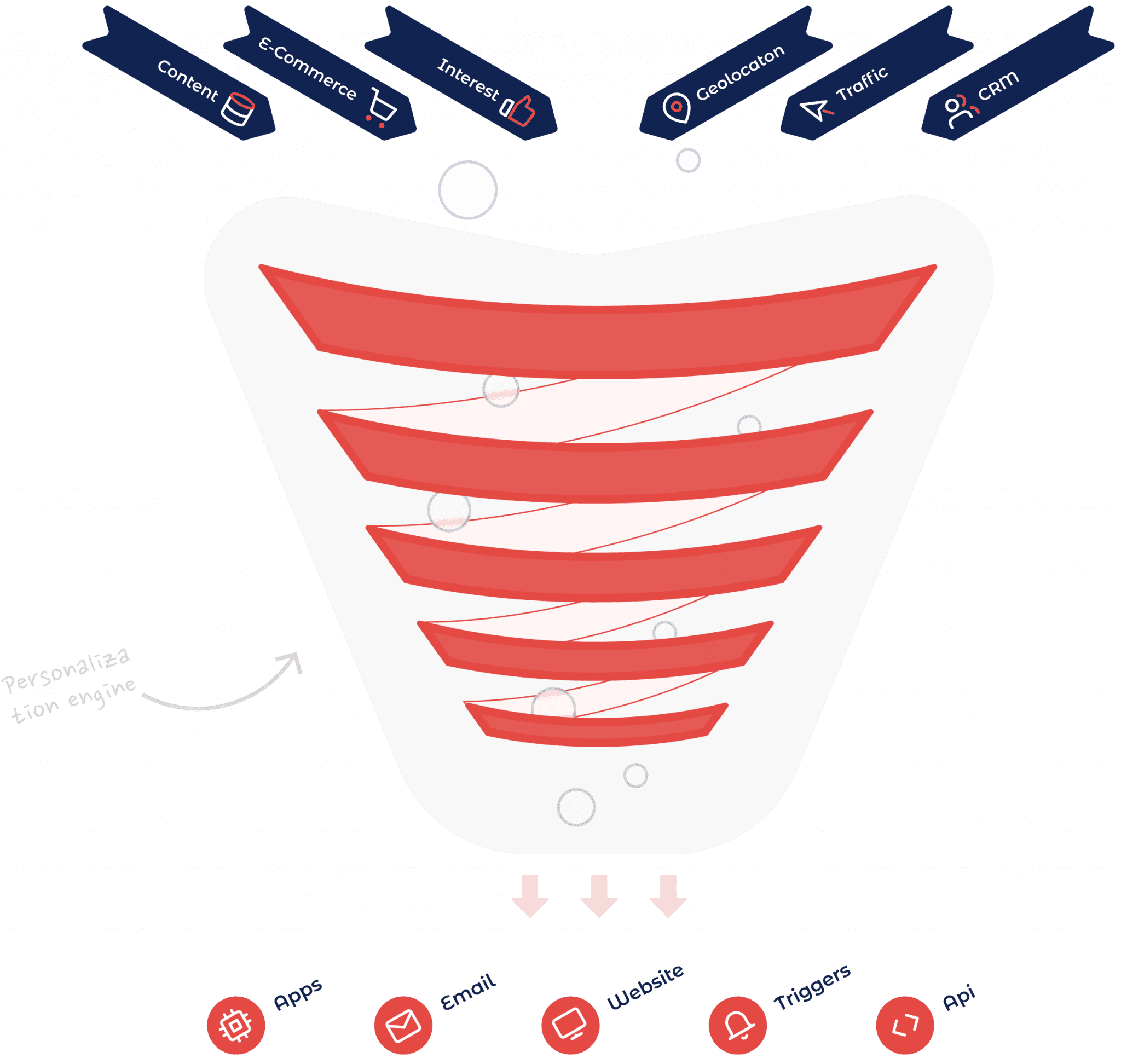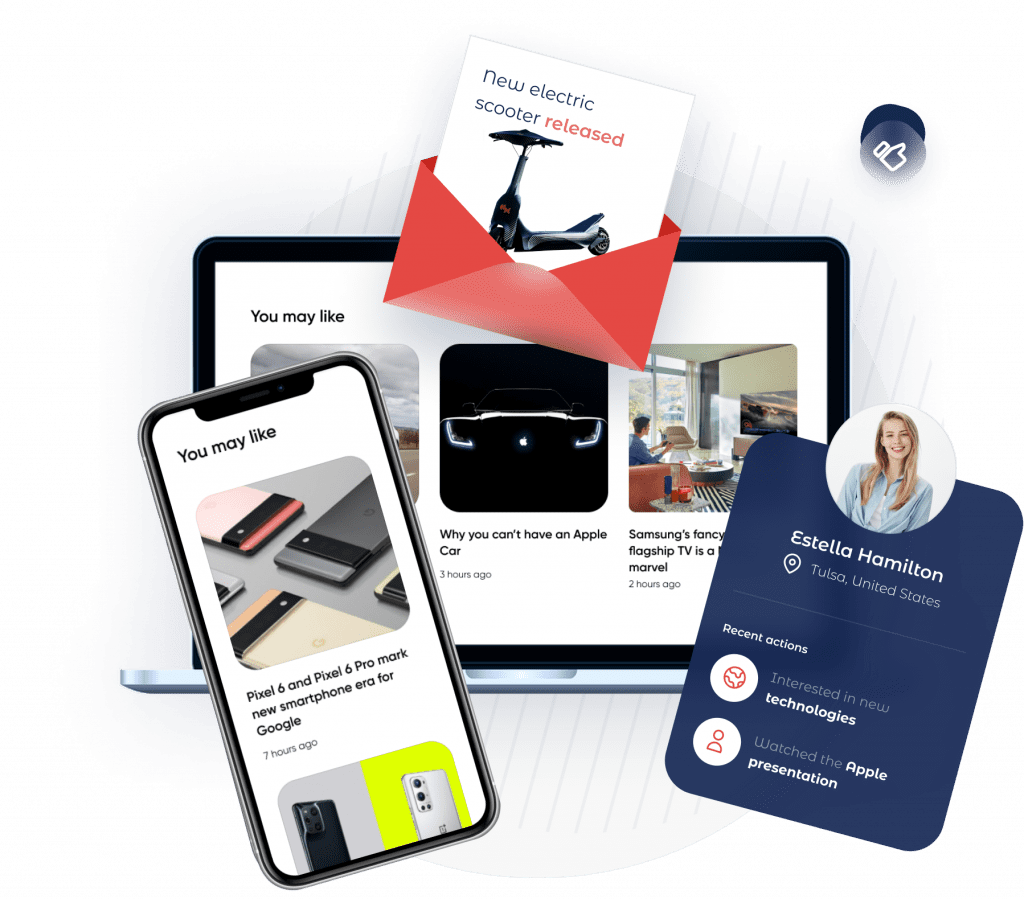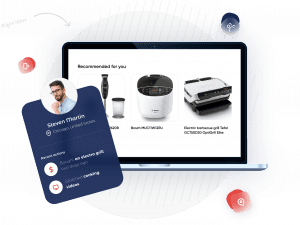Components of a Product Recommendation Engine
Recommendations are a highly effective way of increasing just about every metric of website performance, from engagement to cart value at checkout, but what’s actually going on under the hood of a product recomendation engine? If you’re thinking about implementing product recommendations on your ecommerce store, it can be helpful to have a conceptual grasp of what’s really going on behind the scenes.
Here are some of the principal components that go into any product recommendation engine, and how they work together to increase your store’s performance. These general principles apply whether you’re implementing recommendations on the pages throughout your site, in your emails, app, or via API.
Product Data
One of the most critical things for recommendations is product data. Without product data, your recommendations would have nothing to show the customer. If you think about the visual display of a product recommendation on a website, with a title above and various product images, titles, prices, etc. shown usually horizontally, each of those individual pieces have to exist in your product data.
This means that for each product in your data feed, there needs to be an image URL for the image that will be shown, a title text, a price, a link to the product page, product categories, and perhaps some other elements, depending on your particular inventory.
Luckily, most ecommerce website already have this in the form of a Google Merchant feed, or can easily produce one; even when that’s not the case, Personyze has the ability to crawl your site and generate a feed (speak to your account manager if you would like to do this), and even has the ability to use contextual data (keywords from product titles, etc.) to populate the interests in the feed.

Customer Data
It goes without saying that customer data is a critical component of product recommendations, since learning about the customer and showing them what they’re likely to want is the point of recommendations. Customer data can be divided into User Data (relatively permanent information about a customer), and session data that is only relevant to their given session, such as their cart value.
The most significant type of customer data for recommendations are product category interests. These are a set of category interests in your Personyze account associated with your various products, which are then matched to the individual customer based on their tracked shopping behavior. For each individual customer, the interests are ranked, so that Personyze has a hierarchy of interests for each individual, based on what they’ve viewed, added to cart, and purchased. This is the primary customer data that is used to inform product recommendations.

The Product Recommendation Engine Itself
The recommendation engine itself consists of software primarily based on algorithms. These algorithms are used to combine crowd data (what’s popular) with individual data in order to show visitors what they’re most likely to be interested in, also considering the product data.
Look at it this way: you have three types of data – product data, individual user data, and crowd data. The product recommendation engine brings these three things together to produce what a product recommendation that is likely to show the customer what they want to see.
For a concrete example, let’s take a typical product listing page recommendation, of the “Customers who viewed this also viewed” variety. In this case, we are combining crowd data (how many people viewed which products) and individual data (showing those items associated with the customer’s top-ranked interests first), with product data (the interests themselves, and the individual product information shown in the display).
Every product recommendation engine algorithm uses these three types of data in some way or another, and the way they are put together to produce an effective result is via algorithms.

Display
All that magic of combining data with algorithms would be for nothing, if you couldn’t show the end customer the results in a display designed to match the look and feel of your website. This is why the final component of the product recommendations is the display.
Display widgets are essentially HTML/CSS that is injected into your website and can have any styling you want. You can even tell Personyze to use your CSS classes to get a head start on the right design. Widgets are most often horizontal, but can also be vertical, or shown as popups. For instance, you can show a popup after someone adds an item to their cart, recommending items that were frequently bought together with it.
Displays can also be in email, including third-party emails using our get-code recommendations, which simply insert the recommendation widget into your email HTML. In some cases, the display may even be handled by the client’s own CMS, with Personyze informing it of which products to show via Javascript.
Displays essentially take the raw product data and put it into a user-friendly interface that looks like its built into your website (or email), according to all the algorithm magic discussed above. Displays in Personyze can also go beyond this basic functionality by adding extra add-ons such as social proof, quick-add-to-crat button, urgent sale messaging, and more.
Conclusion
Product recommendation engines add functionality to ecommerce websites that is vital in 2022. Hopefully, this post have given you a clearer understanding of what is actually going on “under the hood” when a product recommendation engine shows your customers the products they want to buy. If you work with the Personyze team for your onboarding, all of these components can be set up and ready to recommend within a matter of a few days, or in some cases, a few hours.




















